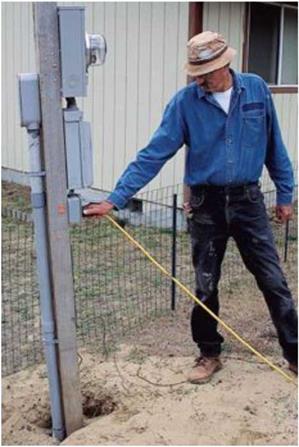HIRING A CONTRACTOR
If you’re building a house, somewhere along the line you’ll likely need to hire a contractor. Whether it’s a surveyor, excavator, foundation contractor, plumber, electrician, or other tradesperson, you’ll want to choose carefully. Regardless of the job, always get bids from at least three contractors. Ask questions about their work, ask to see other work they have done, and ask for names of former clients, then follow up by talking with some of their previous clients. Make sure the contractor you choose is fully insured and bonded. Finally, before hiring anyone, call your state contractor’s board to see whether any complaints have ever been filed against your prospective contractor. (Look in the blue pages of the phone book for the appropriate department within your state’s consumer-protection division.)
When you interview each contractor, pay attention to his or her attitude. You want someone who listens to you. What you don’t need is someone who acts as though he or she knows what you need better than you do. Get a written cost quote that includes a detailed description of the work to be done and a completion date. Make sure all the quotes you receive are for identical work.
 Most contractors are in business because they do competent work for a fair price. But this is the real world and, unfortunately, not every contractor is honest. I recently received a call from a distraught couple who had given a roofing contractor a $2,000 deposit to have their house reshingled. When the couple called to find out why the contractor hadn’t shown up to do the work, the phone number provided by the “contractor" turned out to be disconnected. So please, take care.
Most contractors are in business because they do competent work for a fair price. But this is the real world and, unfortunately, not every contractor is honest. I recently received a call from a distraught couple who had given a roofing contractor a $2,000 deposit to have their house reshingled. When the couple called to find out why the contractor hadn’t shown up to do the work, the phone number provided by the “contractor" turned out to be disconnected. So please, take care.
know you’re looking for land, and focus on the outskirts of the town or city where you’d like to build. But above all, be persistent. Keep your energy and optimism high and you’ll find the right piece of land.
Site preparation can mean many things (see the photo on the facing page). In Oregon, for example, you’re likely to have a huge tangle of blackberry vines to subdue. In the southeast, your land may be covered with kudzu. I once built a house on what looked like an old junkyard—the lot was strewn with a dozen dismantled cars and several old motorcycles, which had to be removed before we could start the construction process. Removing vegetation or junk from a
lot may be just the beginning, though. Another possibility is that you might encounter hard rock, which may require blasting. In any case, you’ll most likely need to hire a contractor to level the land, establish proper drainage, put in a septic tank or sewer connection, prep the driveway, or dig trenches for the foundation footing. If you bring in heavy equipment, do your best to communicate to the operator that you want to save existing trees and to work native plants into the landscape when the project is finished.
Before you can build, you’ll need to run electrical power to the site. Most builders contact the power company to arrange for a temporary power pole to be set up on the site (see the photo on p. 10). Another option is to ask a neighbor


![HIRING A CONTRACTOR Подпись: Neatness counts. A clean, well-organized job site enhances safety and improves construction efficiency. [Photo © Roger Turk]](/img/1312/image012_2.gif) to allow you to use—and pay for—electricity while you are building.
to allow you to use—and pay for—electricity while you are building.
Remember, you’re going to live in this neighborhood. There’s no time like the present to be friendly and to get to know your neighbors. If you’re building in a remote area, you’ll probably need a generator to get electricity to the site.
I’ve built many houses using a portable, gas – powered generator. Make sure your generator is capable of supplying power to several tools at once.
Provide a fence for safety and security
Installing a fence around your site is a good idea. It can deter or prevent the theft of tools and building materials. It also makes the site safer by discouraging unauthorized visits.
Liability insurance is also a good idea, and it may even be required if you’re borrowing money from a bank. Always work to keep your site safe, organized, and free of debris, especially boards with nails protruding from them. Stack unused materials neatly, keep trenches covered, and limit access to any unsafe areas. One nail in a worker’s foot or a bad ankle sprain from tripping into a trench can cost a lot of time in medical attention and recovery.






Leave a reply